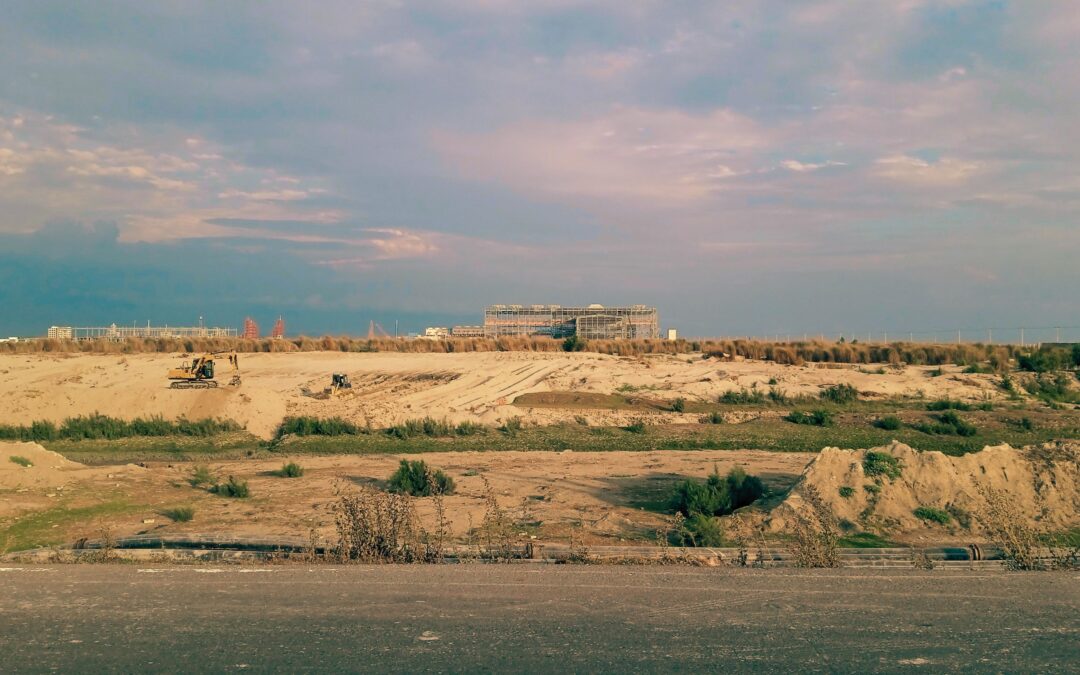Bangladesh has consistently articulated ambitious goals for its future. In the last decade, the government has unveiled one transformative blueprint after another—industrial hubs to lure global investors, deep-sea ports to anchor regional trade, and tourism parks to rival Southeast Asian destinations. Each announcement comes with grand projections: thousands of jobs, billions in investment, and transformation on a national scale.
Zooming closer, however, reveals a more intricate image. The obstinate reality that hides beneath the shiny images is that the execution is shaky. The same persistent issues—poor coordination, unfinished infrastructure, and bureaucratic inertia—too frequently sabotage Bangladesh’s development attempts, regardless of the size of the port, whether it’s a multibillion-dollar deep-sea port or a little land port on the Indian border. Due to inadequate planning and execution, almost 70% of all public projects in Bangladesh are not finished on schedule. The result is a landscape dotted with unfinished projects, underused facilities, and missed opportunities. The challenge, in short, isn’t vision. It’s execution.
Consider the Sabrang BEZA Tourist Park in Cox’s Bazar, the country’s first dedicated tourism economic zone. Planned on 965 acres, with 20% allocated to residential space, it is designed to host 40,000 tourists daily and create 15,000 jobs. On paper, it looks like a game-changer for a region desperate to diversify beyond its beaches. In reality, the project is a tangle of unfinished work and unresolved crises. Security concerns tied to the Rohingya camps remain unresolved. Water, astonishingly, needs to be pumped from hills 40 kilometers away—a logistical nightmare for a facility of this scale. Electricity demand stands at 78 megawatts, but uninterrupted supply is still uncertain. The project lacks even the most basic recreational appeal—no meaningful water sports like surfing, no draw for international tourists. Even the Teknaf road, the main access route, remains in poor shape.
And yet, hope lingers. The Bangladesh Economic Zones Authority (BEZA) insists investors will receive service connections by 2029. If that timeline holds, Sabrang could still emerge as the country’s first real tourism park, finally giving Cox’s Bazar the infrastructure it needs to compete for international tourists. The vision is not the problem—it is the execution that has repeatedly stumbled.
Not all infrastructure projects wear the label of “mega,” but the country’s smaller trade gateways tell the same story in miniature—local projects caught in national dysfunction. The Bibirbazar Land Port in Cumilla, for instance, which should have been a vital artery for cross-border commerce with India’s northeast, is operational but underperforming. The road from the cantonment to the port is well-maintained, and private firms like Omega and BM are actively engaged. Imports include everything from livestock and fertilizer to fruits and timber, while exports range from cement to ceramics and furniture. But structural flaws cripple its potential. There is no cold storage, so perishables like fish fry and spices rot before they can cross the border. Testing facilities are inadequate, preventing smooth trade. The Gomoti River, once envisioned as a shipping artery for cement exports, has lost navigability, making water transport impossible. Since August 2024, bans on jute, plastics, RMG, and liquid products have gutted volumes.
Similarly, the Belonia Land Port is no better. Once a functional railport, it was upgraded to full landport status in 2009. On Bangladesh’s side, infrastructure has been developed. On the Indian side, at Muhurighat, development lags, choking trade flows. Imports have currently collapsed to virtually zero, leaving the port unprofitable for the government. Bangladesh exports some cement, sand, and plastics, but the volume is too small to matter. The irony is painful. Belonia has strong government-to-government potential and could connect to Chattogram or even the Mirsarai Economic Zone. But without regional cooperation, it remains a port in name only. The grand vision of cross-border prosperity is undermined by neglect, imbalance, and mistrust.
Not every mega project is faltering. There are exceptions, and they prove that Bangladesh’s development story is not one of failure but of uneven performance. The Mirsarai BEPZA Economic Zone, for instance, sprawling across nearly 550 acres, has shown real signs of momentum. It has already attracted global names: Nippon Steel, Marico, Colgate, and Asian Paints. Two private ferry jetties are operational, factories are producing, and heavy industries from steel to automobiles are lining up. The government projects US$2.7 billion in foreign investment and US$3.2 billion in annual exports once the zone is fully operational. To accelerate development, BEZA has brought in international partners to create a green factory hub, complete with worker-friendly infrastructure and climate-resilient design. An artificial mangrove forest and coastal plants have even been created for industrial development to tick the “green” box.
Challenges persist. Housing shortages for workers, poor transport links, and over-reliance on congested Chattogram Port slow progress. Coastal risks like salinity and cyclones remain serious threats. But unlike Sabrang or Belonia, Mirsarai has tangible progress to show. It is not just an artist’s impression—it is a functioning zone, however incomplete. If the government can fix logistics and utilities, Mirsarai could anchor Bangladesh’s manufacturing future. It is, for now, the rare bright spot in the mega projects’ portfolio.
Then there is the Matarbari Deep Sea Port, perhaps Bangladesh’s most ambitious gamble yet. For the first time, the country will be able to dock large vessels directly, cutting its dependence on transshipment hubs like Singapore or Colombo. Progress here is undeniable. The navigational channel is complete and already handling coal ships. Contracts for container and multipurpose terminals are signed. With a depth of 16 meters, Matarbari will be Bangladesh’s first real deep-sea port. Regional experts argue it could transform not just Bangladesh but also landlocked neighbors like Nepal and Bhutan, providing them a new gateway to global markets. However, multimodal transportation investment, administrative and legal change, capacity building, and regional diplomacy will all be necessary to transform Matarbari port into a regional hub.
But challenges loom. Sediment buildup already threatens navigability, dredging costs are unresolved, and connecting roads and railways lag behind schedule. Logistics remain expensive. eroding competitiveness. Unless these issues are fixed, Matarbari could underperform despite its promise. Success will depend not on the size of investment but on the ability to sustain attention after the ribbon is cut.
Whether it’s a multibillion-dollar port or a modest border facility, Bangladesh’s projects reveal a pattern: impressive vision undermined by fragile execution. Political incentives reward announcement over completion; institutions work in isolation; and the basics—electricity, water, access roads, and environmental readiness—lag behind.
This is more than just a technical issue; it is also political. Development success is determined less by the number of initiatives initiated and more by their completion, functionality, and financial viability. Bangladesh has demonstrated that it is capable of dreaming big. The next test is to see if it can provide consistently.
Bangladesh is at a critical juncture. It can continue to disclose new “transformative” initiatives while older ones stagnate, or it can concentrate on the unglamorous but necessary task of maintenance, completion, and coordination.
The lesson from both megaprojects and smaller border ports is clear: development cannot be based solely on blueprints alone. Growth occurs not in the press release, but in the implementation—in the pipes that transport water, the roads that connect manufacturers, and the agreements that keep trade flowing. The country’s future will be determined not by how many projects it announces, but by how many it completes—fully, effectively, and inclusively. The time to deliver is now.



RECENT COMMENTS